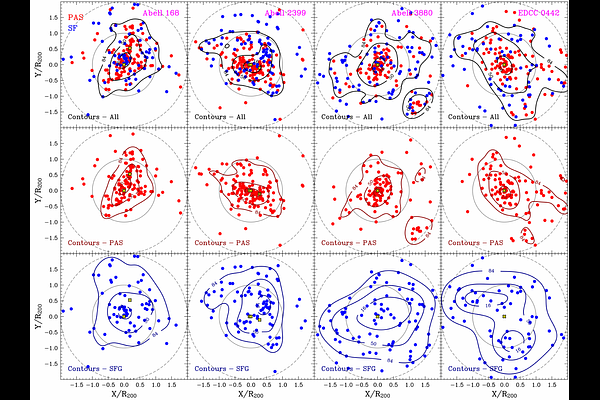The Impact of Cluster Mergers on Galaxy Properties

The Impact of Cluster Mergers on Galaxy Properties
Oğuzhan Çakır, Matt S. Owers, Lucas C. Kimmig, Paul Nulsen, Mina Pak, Gabriella Quattropani, Warrick J. Couch
AbstractBeing the most energetic events in the known universe, the impact of galaxy cluster mergers on the properties of the resident galaxies has yet to be well-understood. In this paper, we investigate the effects of merging environments on star formation in nearby clusters ($0.04<z<0.06$) from the SAMI Galaxy Survey - A168, A2399, A3380, and EDCC 0442 - which exhibit different dynamical activity. Using single-fiber spectroscopy from the SAMI Cluster Redshift Survey (SAMI-CRS) and Sloan Digital Sky Survey (SDSS), we trace star formation (SF) activity across the cluster sample by identifying the star-forming galaxy (SFG) population based on spectral features. We find a mild enhancement in the star-forming galaxy fraction $f_{SFG}$ in merging clusters, although not statistically significant. The spatial and projected phase-space distributions show that SFGs in merging clusters are well-mixed with the passive population, while galaxy populations exhibit a clear segregation in the relaxed clusters. Analysis of equivalent width of $\rm H\alpha$ line (EW($\rm H\alpha$)), as a tracer of recent SF activity, does not reveal strong evidence of triggered star formation activity as a function of dynamical state for both the global cluster environment and subsamples of galaxies selected near possible merger features. This suggests that the increase in $f_{SFG}$ is due to the mixing of galaxies in dynamically complex, young merging systems that are still forming, unlike their older, relaxed counterparts that have had longer to quench.